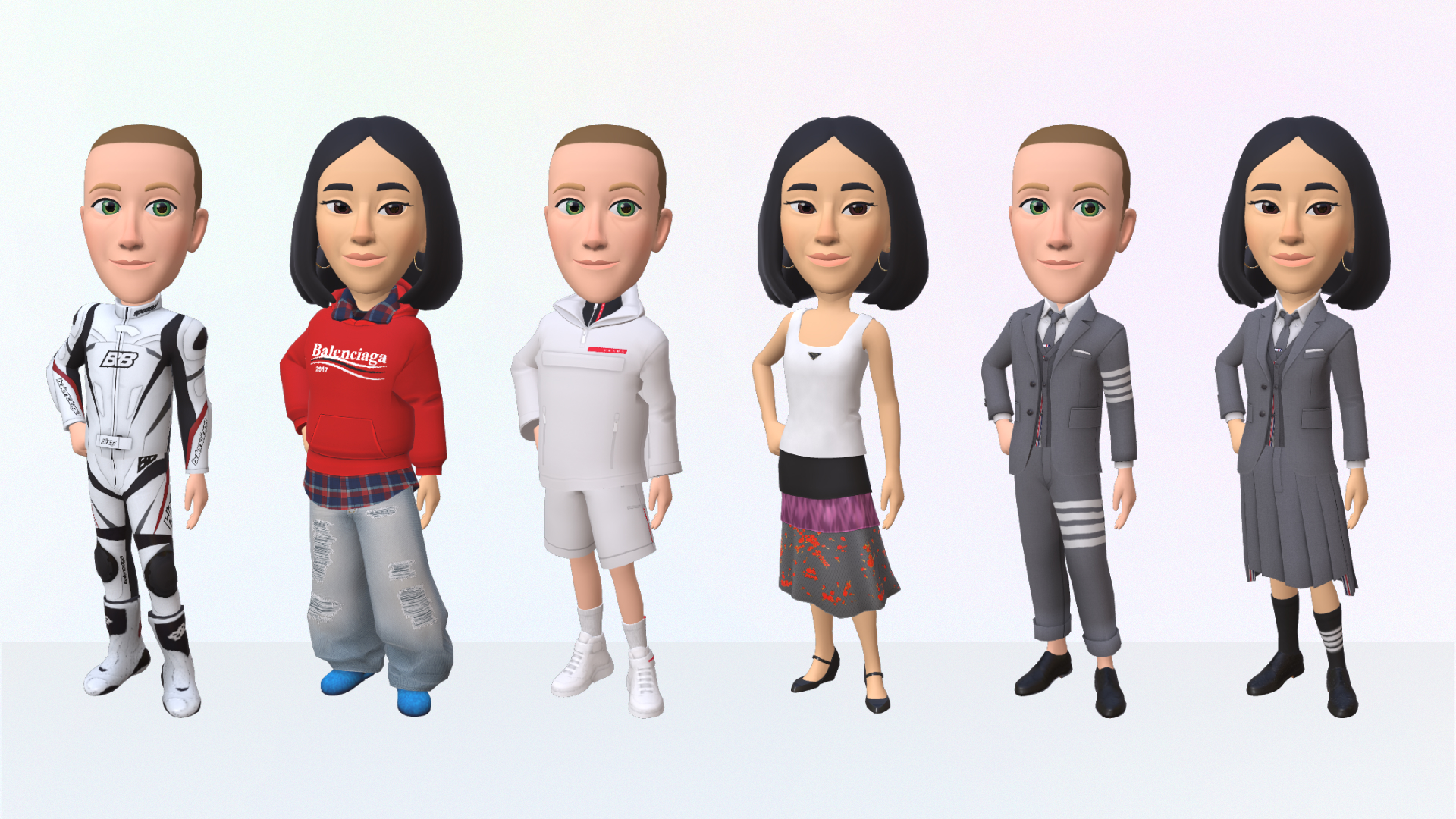Meta’s investment in Reality Labs continues to worry investors, as there are a lot of unknowns. However, our analysis of the potential revenue opportunity suggests that Mark Zuckerberg’s massive investment in the metaverse has the potential to pay off handsomely. Returns won’t be quick, and there are many risks, but - well executed - this could double Meta’s (already enormous) revenue.

Ever since Mark Zuckerberg proclaimed in 2019: "the metaverse isn't a thing a company builds. It's the next chapter of the internet overall.", his company, Meta, has pumped $36 billion into its Reality Labs division (source). It is hugely unprofitable, reportedly losing $3.7bn in the most recent quarter. Despite this, Zuckerberg is continuing to pour billions into his metaverse dream, arguing that it's the future of computing. So, the big question is this: “is Mark Zuckerberg’s metaverse gamble an act of genius or delusion?

To begin to answer this question, one must first clarify what we mean by the metaverse. The metaverse is a virtual shared space, created by the convergence of virtually enhanced physical reality and physically persistent virtual space, including the sum of all virtual worlds, augmented realities, and the internet. It is being hailed as the next evolution of the internet and is described as "extended reality" – XR for short. This combines augmented reality (AR), virtual reality (VR) and mixed reality (MR). AR adds a digital overlay on top of the real world, whereas, VR is a fully immersive, digital experience in a virtual world. MR blends both real and digital worlds.
The metaverse, and web3 in general have been attracting a lot of attention in the past few years, but the metaverse isn’t actually new.

The first VR machine was created in 1956, when Morton Heilig the Sensorama Machine, in 1956
The term “Metaverse” was first used in Neil Stevenson's 1982 novel, Snow Crash. Stevenson’s metaverse was a virtual place where characters could go to escape a dreary totalitarian reality.
In 1998, Sportsvision broadcast the first live NFL game with a yellow yard marker, and the idea of overlaying graphics over real-world views quickly spread to other sports broadcasting.
Swedish furniture giant IKEA joined the metaverse mix in 2017 with their innovative Place app, which allows you to select a piece of furniture and view what it looks like in your home or office.
Just like there isn’t one social media company, there also isn’t one metaverse. And just like there are billions of web pages all for different purposes there will be different metaverses for different things.
There are currently two types of metaverse: centralised (web2) and decentralised (web3). Unsurprisingly, Meta is taking what many call a traditional web2 approach and is going for a centralised metaverse.

With all this hype, can you actually do anything useful in the metaverse? The metaverse started predominantly with a focus on gaming. According to research conducted by Basis Research, gaming is still the primary reason people purchase a VR headset and the primary use case with which to start entering the metaverse. Beyond this, there are many potential use cases for the metaverse, including socialising, entertainment, education, business, art & creativity, health & wellness, travel and more.

How much time will people spend in the metaverse?
Gartner predicts that 25% of people will spend at least one hour per day in the metaverse by 2026 (source), with Gen Z, millennials, and Gen X consumers to spend at least four hours per day in 5 years (source). The majority of use cases are for shopping, then telehealth, live learning, travelling, meeting friends and socialising with family. Within a decade, enthusiasts believe it will not be unusual for people to spend 12 to 15 hours a day in the metaverse to communicate, work, learn, shop, capture data and more. It is also expected that people will have more than one avatar, or virtual persona, which may result in billions of digital personas within a decade (source).
How big could the metaverse be and where are the revenue opportunities?
The global metaverse market size in 2022 was valued at USD 47.48 billion (source) and reached an all-time high of 400 million monthly active users in 2022 (source), 230 million on Roblox alone.

A report by McKinsey (source) estimates the metaverse has the potential to grow up to $5 trillion in value by 2030. It shows e-commerce as the largest economic force ($2.6 trillion), ahead of sectors such as travel ($350 billion), education ($270 billion), advertising ($175 billion), entertainment ($171 billion) and gaming ($117 billion).

Additional opportunities include:
Virtual real estate: in the metaverse, individuals and businesses can purchase virtual land or property, which they can then use for a variety of purposes, such as building virtual homes, offices, or stores. These virtual properties can be bought and sold just like physical properties, and may generate revenue through their sale or through the sale of virtual goods and services offered on the property.
Virtual goods and services: the metaverse may provide opportunities for businesses to sell a wide range of virtual goods and services, such as virtual clothing, accessories, and other customization options for avatars.
Access to virtual experiences: in the metaverse, businesses and organisations may be able to charge for access to virtual events, such as concerts, sports games, or educational seminars. These events may be offered as one-time experiences or as part of a subscription service.

Within digital advertising, the metaverse allows companies to create their own world that represents their brand, which no video, ad, words or image could do. The metaverse offers a more immersive experience than traditional advertising. Some potential advertising opportunities include:
Virtual storefronts: companies can create virtual storefronts within the metaverse where they can showcase and sell their products. These storefronts can be interactive and immersive, allowing users to experience the products in a way that is not possible in the physical world.
Virtual events: companies can host virtual events within the metaverse, such as product launches or conferences, which can be attended by users from anywhere in the world.
Virtual billboards: companies can create virtual billboards or other forms of advertising within the metaverse, which can be seen by users as they navigate the virtual world.
Product placement: companies can work with creators of virtual experiences within the metaverse to incorporate their products into the experiences in a way that is organic and meaningful to users.
Customised experiences: companies can create customised virtual experiences within the metaverse that are tailored to their target audience and designed to showcase their products or services.
What could Meta’s role in the metaverse be?
Meta could play a number of different roles in the metaverse; broadly split between owned vs monetised. Meta’s biggest challenge is decentralisation. Meta — which boasts the lion’s share of the world’s social media user base — is currently struggling to transition from its web2 (centralised) origins toward a decentralised web3 ecosystem. Many believe that the metaverse has to be open, integrated and unowned by any single entity. Meta’s push to own the metaverse is antithetical to this concept.

It is likely therefore that though Meta will own some sites, it won’t own the majority of the metaverse. However, Meta will still be able to monetise other parts of the metaverse via advertising revenue from being the ad-platform of choice, hardware sales, digital avatar creation and corresponding virtual good sales.

Based on these differing scenarios, our scenario analysis forecasts that by 2030 Meta could generate net revenue from $23bn up to $356bn from the metaverse. To put this in context, Meta generated net revenue of $91.4bn in 2022, so the metaverse represents massive upside potential.

Revenue breakdown
In our most likely scenario above, $270bn revenue would flow through Meta, with net revenue of £70bn, i.e. gross profit of 26%.

In our most likely scenario, 25% of revenue would come via ad revenue with ads served on 3rd party sites ($17.4bn), 7% from VR hardware and the associated software ($4.5bn), 21% from the sale of digital goods for avatars ($13.8bn) and 47% from monetisation of Meta’s own metaverses ($32.8bn, assuming Meta sites gain a 5% share of time spent across all metaverses).

What could derail the metaverse?
Experts are split about the likely evolution of a truly immersive metaverse. They expect that augmented- and mixed-reality enhancements will become more useful in people’s daily lives. Many worry that current online problems may be magnified if web3 development is led by those who built today’s dominant web platforms.
To gain mass adoption there are a number of barriers that need to be overcome, including:
Technical challenges: building and maintaining a metaverse requires significant technical resources and infrastructure. This can be a barrier for smaller companies or organisations that may not have the skills to build a metaverse.
Cost to use: building and maintaining a metaverse can be costly, and this may be a barrier for some companies and users, who may not be willing or able to pay for access.
Privacy concerns: some people may be hesitant to enter the metaverse due to concerns about privacy and the potential for personal information to be shared or used in ways that they are not comfortable with.
Lack of understanding: some people may be unaware of the metaverse or may not understand how it works, which could be a barrier to uptake.
Limited content: the metaverse is still in its early stages of development, and there may be limited content available for users to engage with. This could be a barrier to uptake, as users may not find the metaverse appealing if there is not enough content to keep them engaged.
Legal and regulatory challenges: there may be legal and regulatory challenges associated with the metaverse, such as questions around intellectual property and liability. These challenges could be a barrier to uptake, as companies and organisations may be hesitant to enter the metaverse if they are unsure about how to navigate these issues.
Conclusion
Given the early stages of the metaverse, it is almost impossible to predict what will happen in the future. Despite this uncertainty, there are clear signs that there will be vast opportunities should the metaverse grow as predicted.
How this value is distributed, when it materialises and what the tipping points will be are still uncertain, but our analysis of the possible scenarios do show substantial upside for Meta. So, investing $15bn per year for several years may well be worth it, if the upside is a business generating $70bn per year in net revenue.
A key assumption driving our forecasts is that Meta’s ad tech will be the dominant ad platform used across metaverses. We feel confident in this, given Meta’s current leadership in this space, plus the barriers to entry for other players.
Only time will tell, and eye watering sums of money are going to continue to be ploughed into the metaverse by Meta and others, much to the concern of wary investors, but for these early pioneers the rewards could be worth it.
